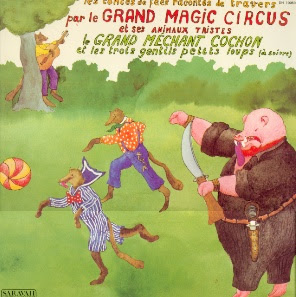
'L'histoire, que vous savez, est racontée et mise en musique dans une nouvelle saga pleine de blagues et de connivences avec l'enfant qui écoute. Aucun n'y résistera, c'est vraiment très drôle'
Jerôme Savary
Né en Argentine en 1942, son père était écrivain et sa mère la fille de Frank Higgins, Gouverneur de l’Etat de New York. Sa mère revient en France en 1947 et sa famille s’installe en Haute-Loire où Jérôme Savary poursuit sa scolarité au Collège Cévenol.
Très jeune, il part pour Paris où il étudie la musique avec Les Martenots, avec l’ambition de devenir musicien de jazz. En 1958, il entre à l’Ecole des Arts Décoratifs. A 19 ans il part pour New York où il s’immerge dans le monde du jazz et rencontre Lenny Bruce, Count Basie et Thelonious Monk.
Quand il revient en France, il intègre le monde du théâtre et les « argentins de Paris » parmi lesquels : Jorge Lavelli, Copi et Fernando Arrabal. En 1965, il fonde sa première compagnie théâtrale : la Compagnie Jérôme Savary, qui sera ensuite appelée le Grand Magic Circus, avant de devenir en 1968 le Grand Magic Circus et ses animaux tristes.
De 1982 à 1985 il est directeur du Centre Dramatique National du Languedoc-Roussillon à Béziers et Montpellier. Il est nommé par le ministre de la Culture et par la ville de Lyon directeur du Carrefour Européen du Théâtre - Théâtre du 8e de 1986 à 1988.
En 1988 il est nommé Directeur du Théâtre National de Chaillot, poste qu’il occupera jusqu’à sa nomination à l’Opéra Comique le 1er octobre 2000. (in: ThêatreOnline)
Anton Bruhin - In/Out (In/Out) 1981
 INOUT was recorded on a Sanyo M7300L stereo radio cassette recorder with both an integrated and external microphone.
INOUT was recorded on a Sanyo M7300L stereo radio cassette recorder with both an integrated and external microphone.The recorder is in the recording standby position, both RECORD and PAUSE buttons are pushed. Then I sing or play a tone into the microphone. During this tone, I release the PAUSE button by pushing it. Subsequently, I press the PAUSE button again within a fraction of a second. Now the first short note is recorded. In InOut I added this way thousands of very short notes like a patchwork, like an acoustic quilt with geometric irregularities and varied patterns.
The percussive effect was produced by the clicking noise of the PAUSE button. Recorded with the integrated microphone, those clickings appear with pretty high amplitude, depending on the vehemence by which I pushed the button. Recorded with the external microphone, the clicking will not be recorded and remain silent on tape. For InOut I alternated both possibilities; for a longer passage I recorded solely clicking noises to obtain a percussion solo. (in: ubuweb)



